There was a moment, early in our recent visit to Berlin, that jolted me.
Our first morning, we found ourselves strolling an area at the heart of the city known as Museum Island, admiring some of Berlin’s most important monuments and buildings. Initially, it was subtle, just below consciousness, part of the texture of the stone all around us. Slowly, however, observation gave way to understanding. Bullet marks. Thousands. Everywhere. And in an instant, the horror of what had taken place here came rushing back from a past that cannot be escaped or erased. The stone remembers. The stone testifies.
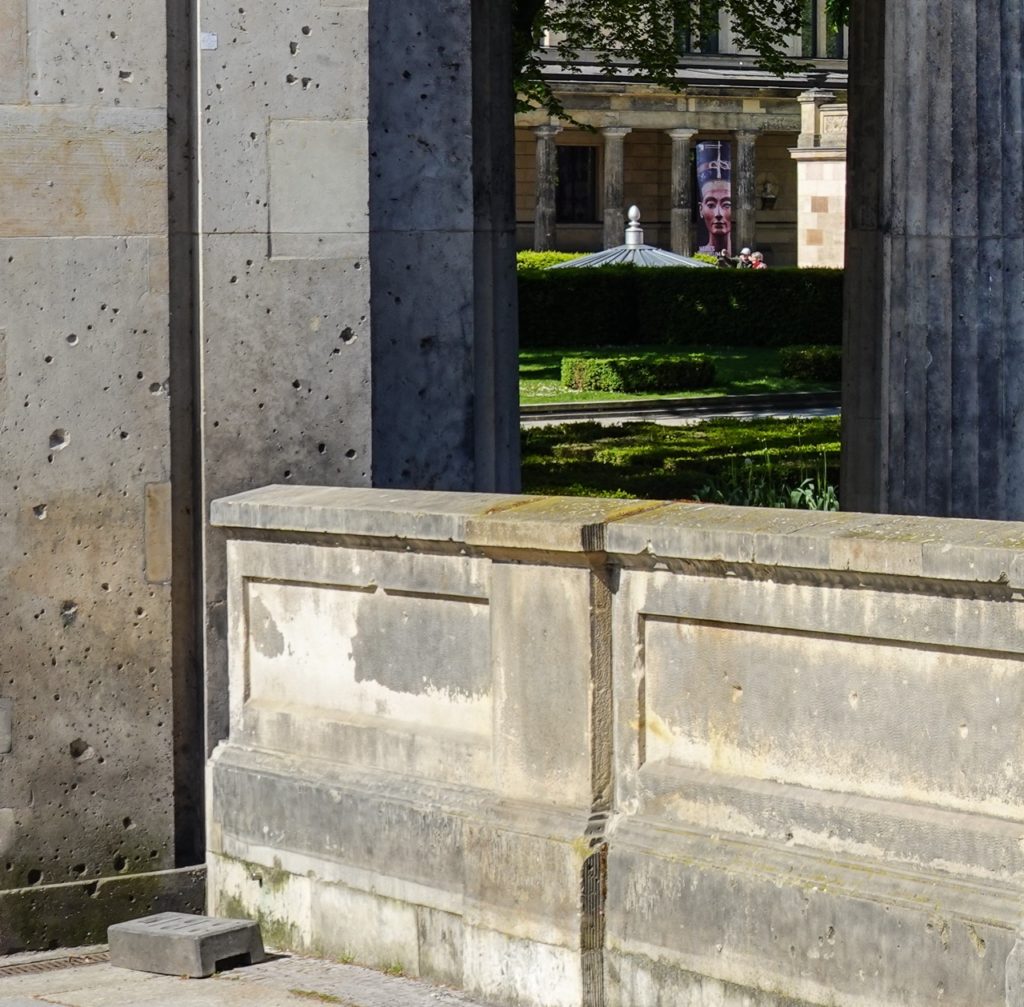
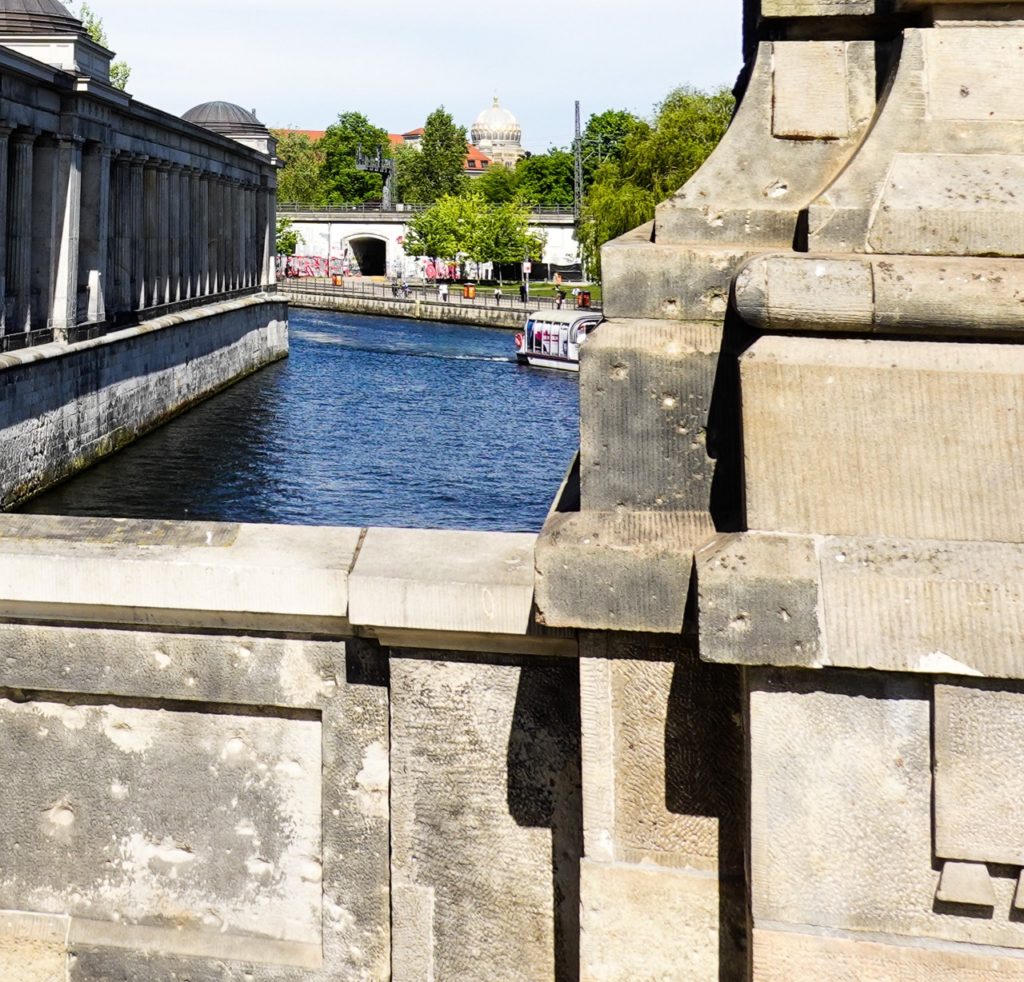
Priorities
We were in Berlin primarily to hang out with our son Michael and his partner Charlotte. We’d been carefully managing our spring schedule to make sure we could fit in a few days to pop up to the German capitol. Germany has not been high on our list of places to travel, but a chance to spend time with Michael and Charlotte was not to be missed. So, we were off to Berlin, albeit with some trepidation. In our minds, Berlin is associated with all the darkest decades of the twentieth century. Wouldn’t a tour of this city inevitably be a bleak, somber experience? On the other hand, Berlin is the home of a relentlessly youth-focused art, music, dance, and political scene that has made it internationally famous for night life, street parties, and a wildly popular musical genre called “techno” which is pretty much lost on me. It was clearly going to be a challenge to reconcile all these themes.
As we made our plans, we quickly came to understand that Berlin’s diversity extends to its neighborhoods which include something for everyone. After some deliberation, we decided to locate ourselves in the Prenzlauer Berg quarter of the city at a charming boutique hotel created from a Victorian era public pool complex. Located in part of what was once the German Democratic Republic (East Germany), it proved to be a wonderful location – saturated with cafes and shops, dotted with parks, and on tree-lined streets of elegant apartment blocks from another era. We bought a week-long pass to the public transportation system which seems to cover every block of the entire city with hop-on-hop-off ease. The city center was three tram stops from our lair and connecting trains to destinations around the city were as easy as stepping off one conveyance and strolling on to another. Berlin might have the most complete and convenient public transportation we have ever experienced.
History Lessons
With logistics sorted, we began to explore the Mitte, or city center. As I admitted earlier, we approached the historic heart of Berlin with some reservations. In the culmination of WWII, the Nazi’s made it clear they intended to resist defeat down to the last man. It took the complete destruction of the capitol to bring the war to an end. In the last six weeks of the war, American and British planes dropped as many tons of explosives on the city as had been expended in the entire three years prior. Something like 90% of the city was damaged, and the center was reduced to rubble. Then, the Russian army arrived, and the fighting went street by street until every remaining German soldier lay dead or captured. Total victory was accompanied by the long honored “code” of war for conquering armies: rape. It’s estimated that nine in ten of the surviving women in Berlin were brutalized and, of course, anything of value was looted. Walking through the heart of this “ground-zero”, identifying the surviving pre-war buildings from the reconstructed ones became unmistakable. The stones testify.
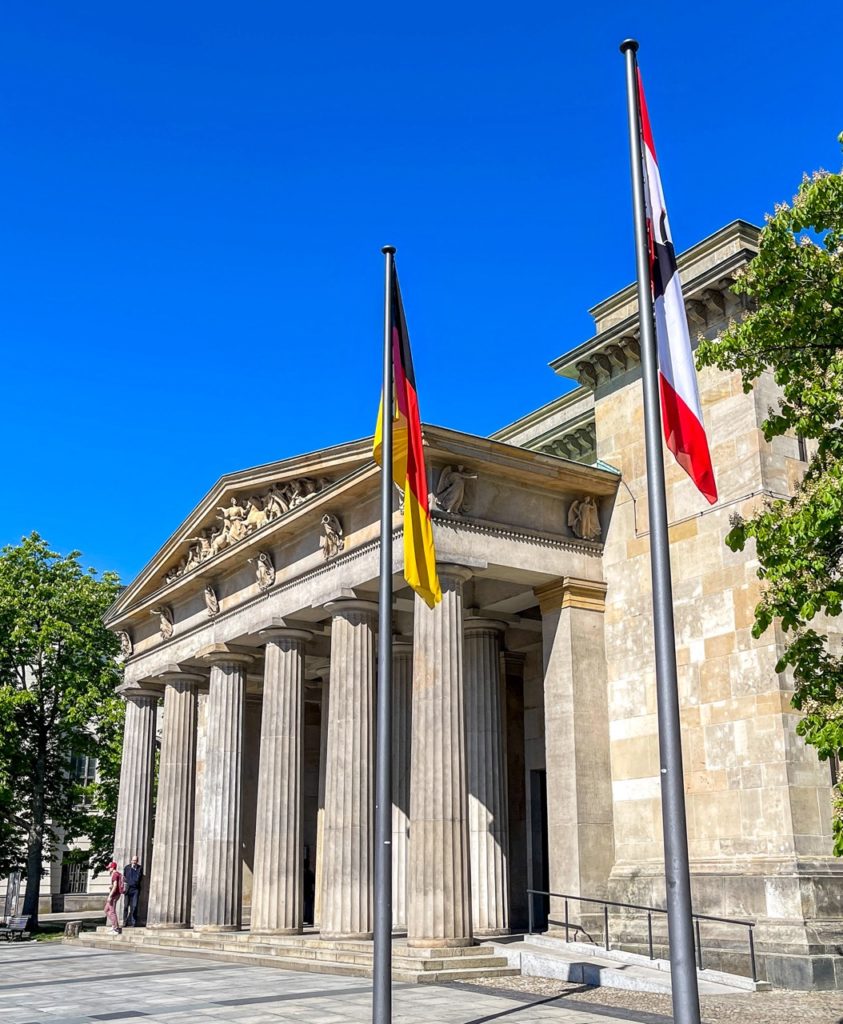
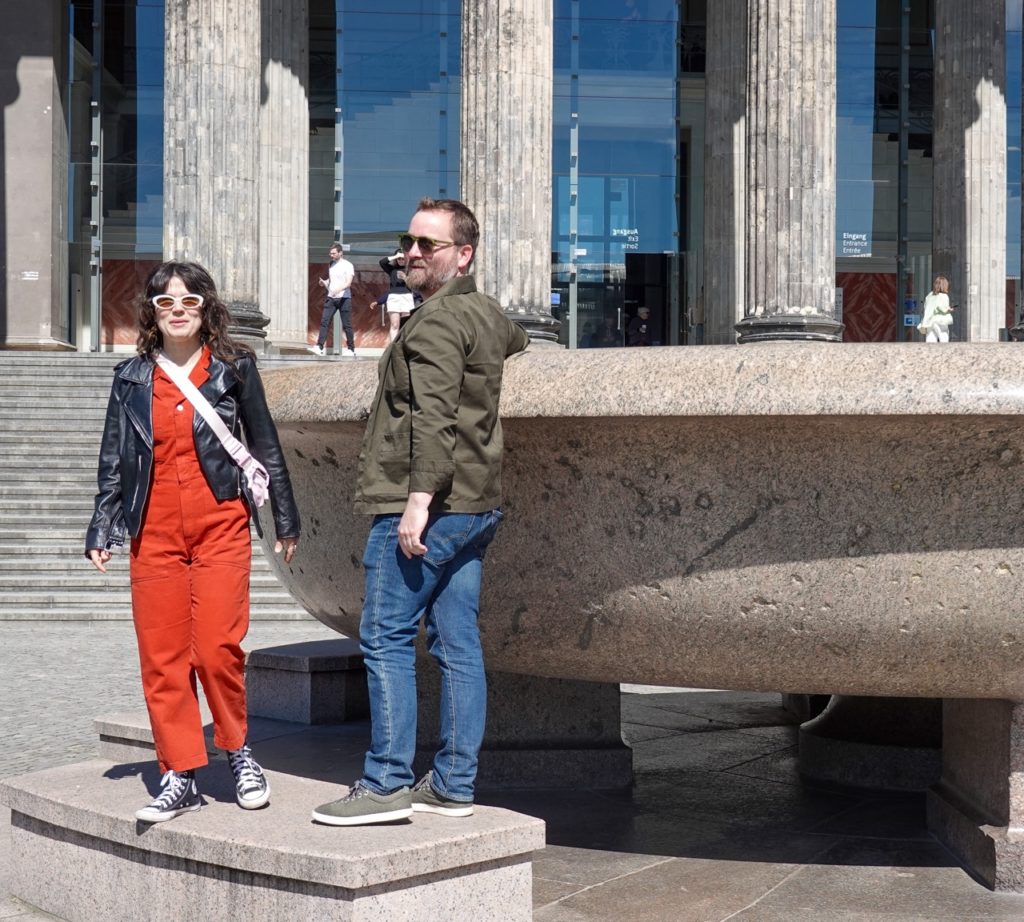
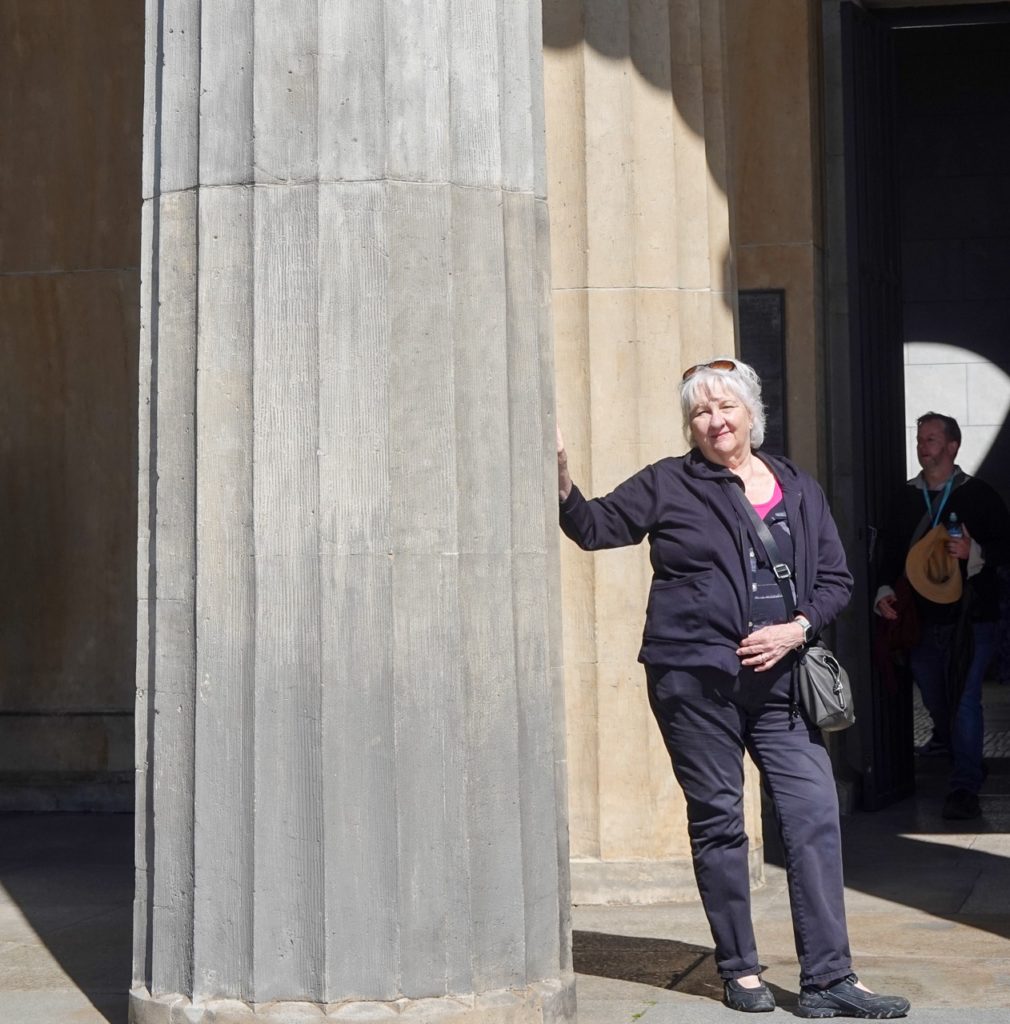
Today, the area is a tranquil, gracious collection of museums, monuments, gardens, and open plazas, splitting the flow of the river Spree, connected by stately bridges at every avenue. For the most part, Berliners have recovered and moved well beyond their history. To their credit, however, it has not been left behind, so much is woven into the fabric of life in the city.
Timeless Grief
Among the monuments I found most moving was the Neue Wache (new watchhouse) located just a block west of the island. Originally built as a guardhouse for the royal palace which sat opposite, it was designed by a Jewish architect and constructed in 1818. At the end of The Great War, it was turned into a monument honoring the dead from that conflagration called The Memorial of the Prussian State. The Nazis repurposed it as the Heroes Memorial. In 1960, the East Germans dedicated it as the Memorial to Victims of Fascism and Militarism. Finally, after reunification, the monument was rededicated as the Monument for the Victims of War and Tyranny. Beyond the neoclassical façade, in a minimalist void, sits a bronze pieta – a mother cradling her dead son – under an open oculus, exposed to the elements. For me, this symbol of the suffering visited on the civilian populations is about more than the two world wars and it couldn’t be more appropriate that it has been renamed by each new regime. It originated in, and speaks to, the current era of human destruction. Modern war has evolved beyond a clash between the militaries of competing states. We now rationalize the all-out destruction of whole societies of innocent citizens if it suits our aims. That this monument was originally designed by a Jew is simply one on a list of ironies that defines modern Berlin.
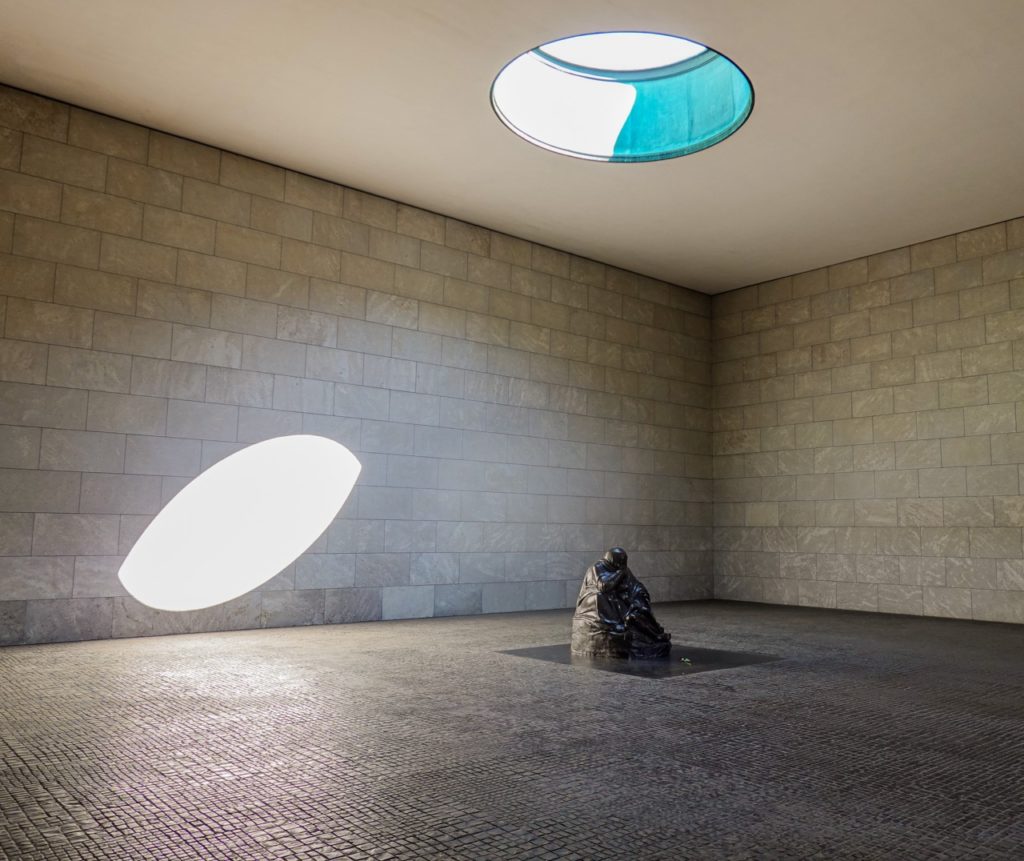
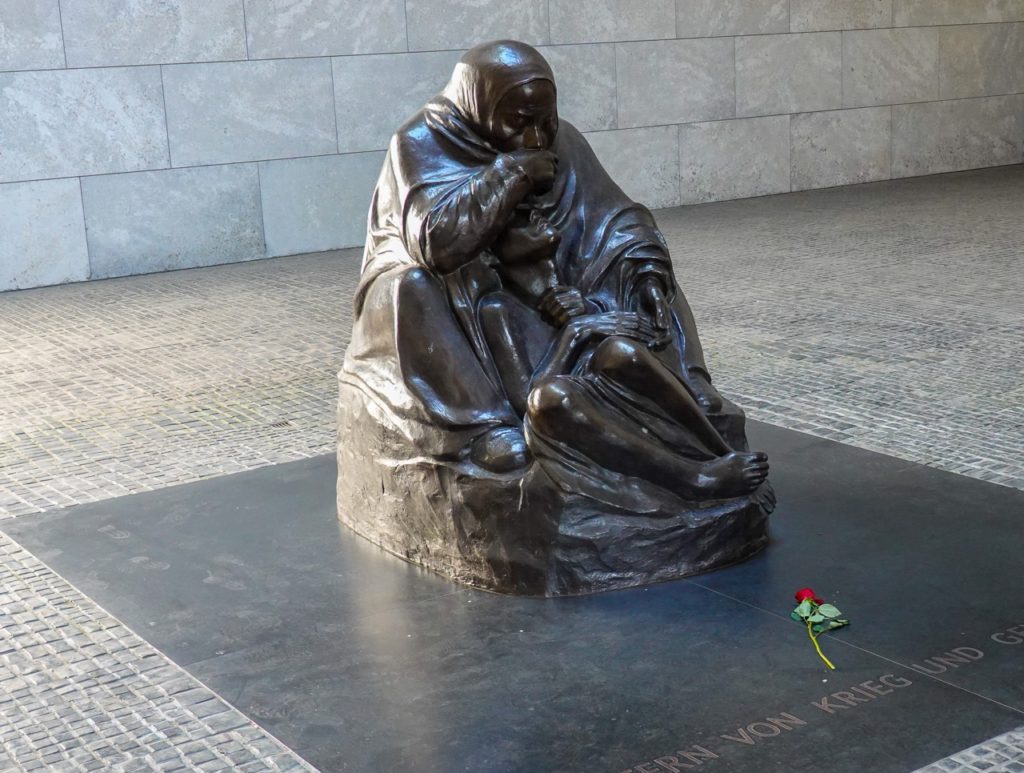
Life is too ironic to fully understand. It takes sadness to know what happiness is. Noise to appreciate silence & absence to value presence.
Abhysheq Shukla, KARMA
The next stop on our stroll through the city was another of its enduring symbols: the wall. Popular images of the Berlin wall, razor wire, the death strip, and Checkpoint Charlie are so ubiquitous and iconic for members of my generation that seeing the remnants 35 years after the rest was removed proved to be a bit anti-climactic. It was startling to realize that it only existed for some 28 years, from 1961 to 1989. And, in that time, there were only around 200 deaths associated with attempts to cross. Of course, it came to symbolize far more in the struggle between communism and democracy that followed the struggle between fascism and democracy and which now . . . we . . . well, anyway . . .
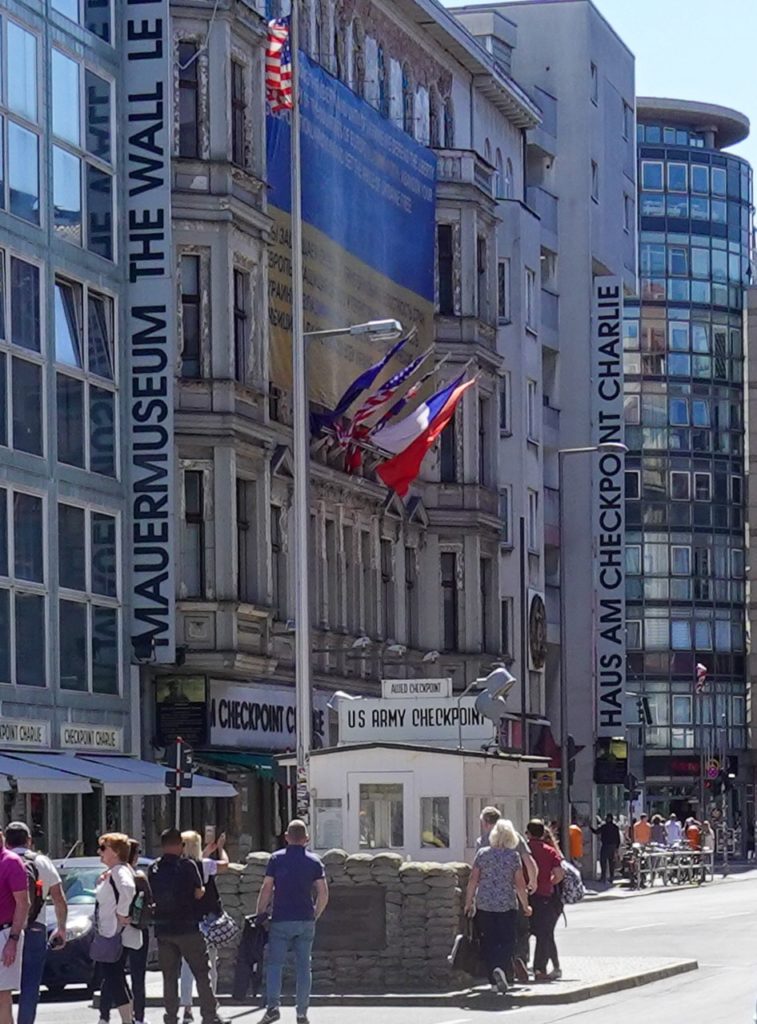
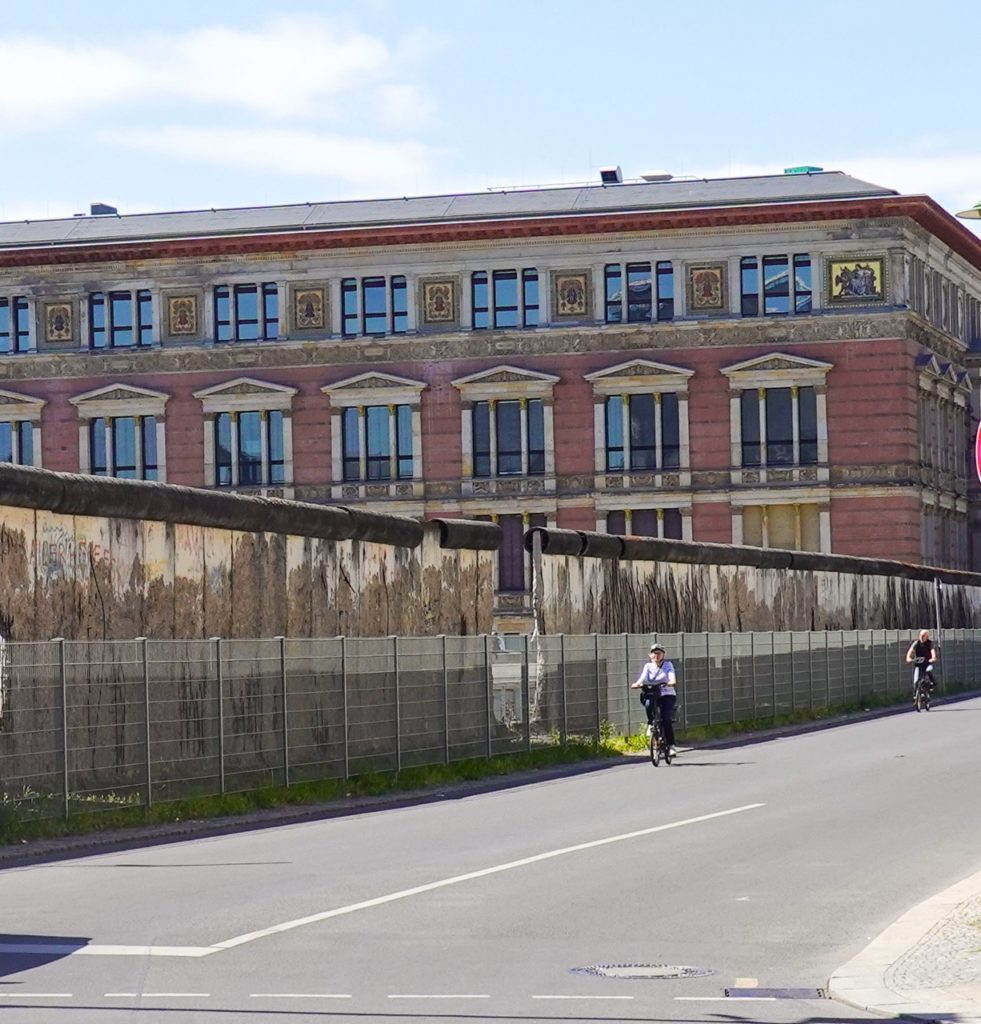
As you can see from the photo, the wall is now surrounded by a fence to keep people away from the wall. This fence, of course, is made entirely of irony. (I’m afraid I must give credit to our guide for this joke but could not resist including it here.)
Finally, we were greeted by one of the most enigmatic and sublime monuments I have ever confronted in the Memorial to the Murdered Jews of Europe. As Germans wrestled with their history, a memorial to the 6,000,000 jews murdered during the Nazi regime was proposed and a design competition held. The selected design resulted from a collaboration between architect Peter Eisenman and the artist Richard Serra, and was constructed on nearly five-acres that had once been part of the death strip. It consists of 2,711 monolithic concrete “stelae” of various heights arranged in a grid across the undulating site, creating an environment that is simultaneously orderly and totally disorienting.
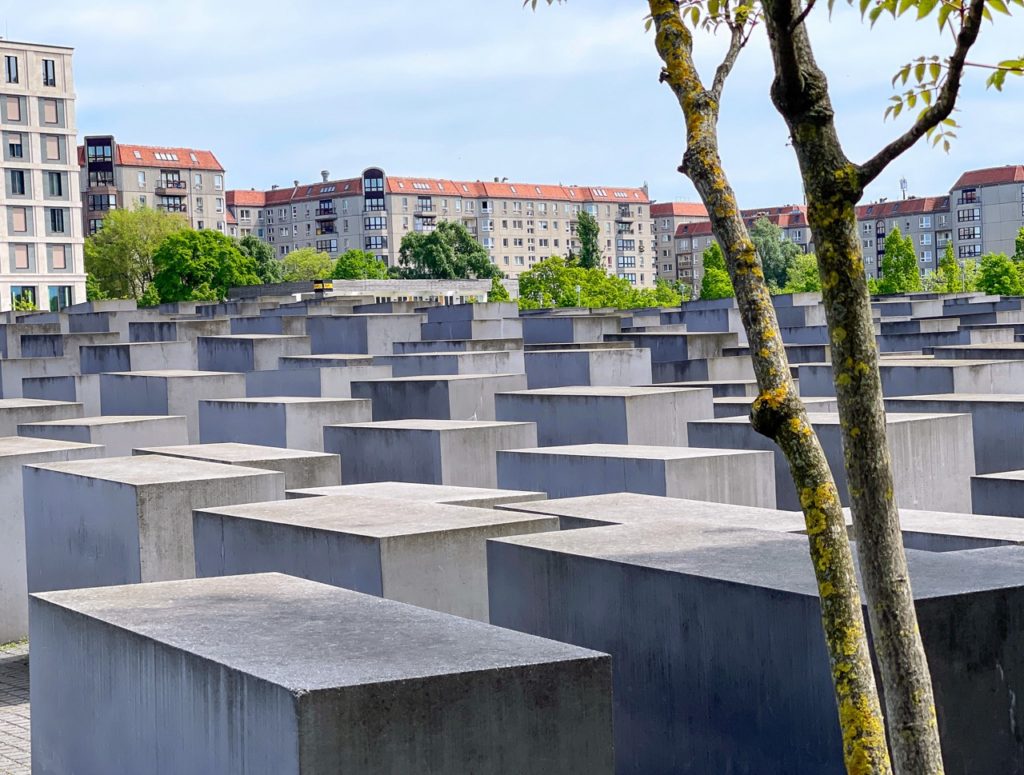
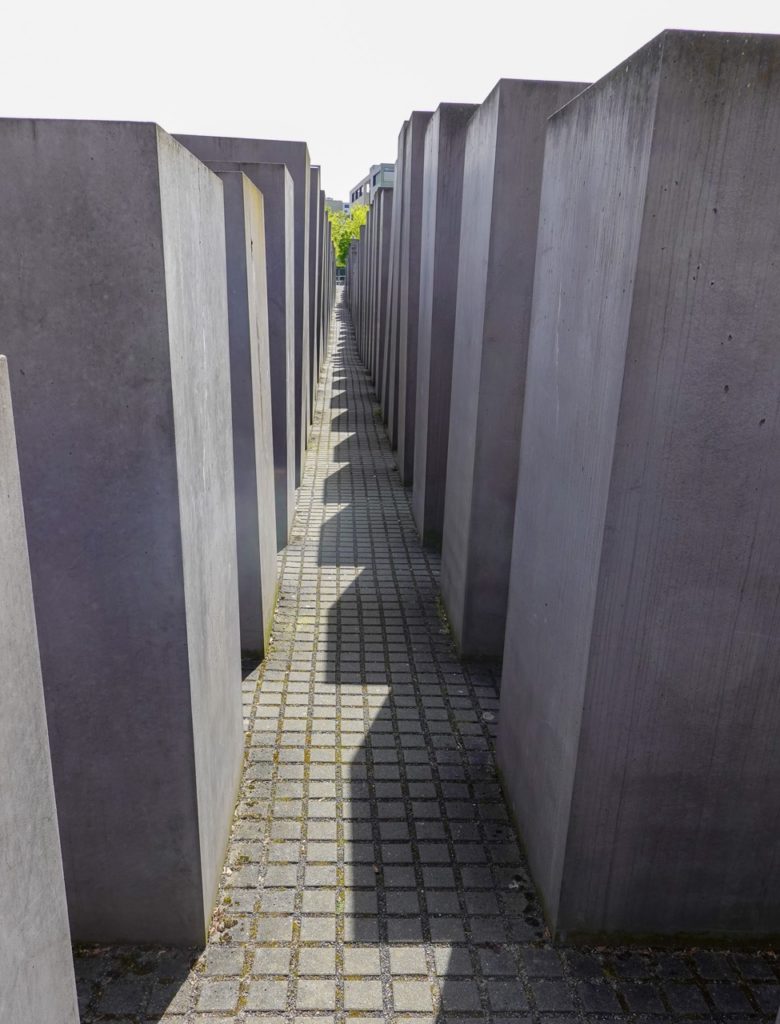
The project represents the instability inherent in a system with a seemingly rational structure and the potential for its gradual dissolution. It makes it clear that an ostensibly rational and orderly system loses touch with human reason when it becomes too large and grows beyond its originally intended proportions . . . it becomes clear that all closed systems must fail. . .
Peter Eisenman
I’m a huge Richard Serra fan and found this monument to be a very moving expression of his art encapsulating an unimaginable concept: the systematic murder of millions of innocent people in service to profane, ideological, inhuman constructs of purity. As a monument and a work of art, it is wholly unsettling and completely defies interpretation or understanding. It is, in my opinion, a total success.
Thus ends our first day in Berlin.
A Bucolic Refresh
In a stroke of fortuitous planning, we had scheduled a day trip an hour out of the city for our second day. I say this was fortuitous because I felt the need to process our first exposure to the historic center of Berlin, and it happened that our outing in a verdant, ecological reserve was just the right tonic. We boarded a train and set out for the town of Lübbenau and the UNESCO heritage site known as Spreewald to relax into the meditative, healing arms of mother nature. Also, beer, pickles, currywurst, pretzels . . . well, you get the picture.
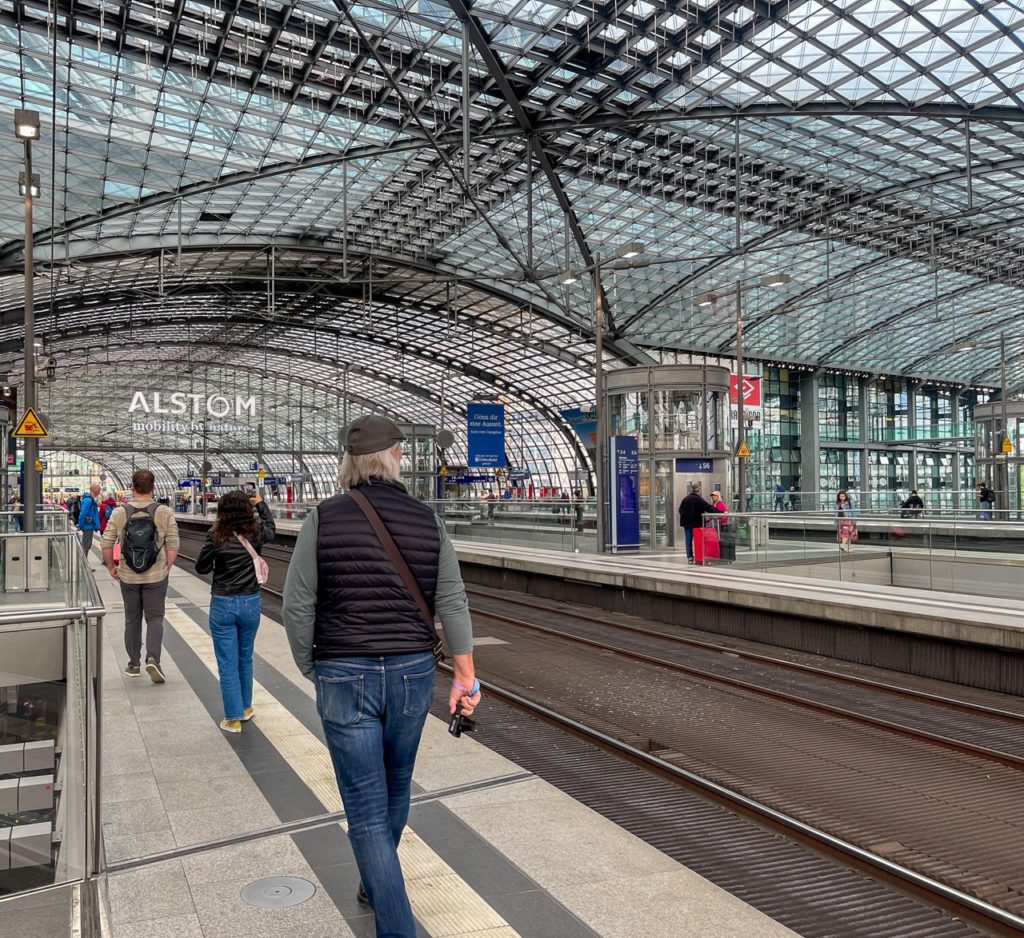
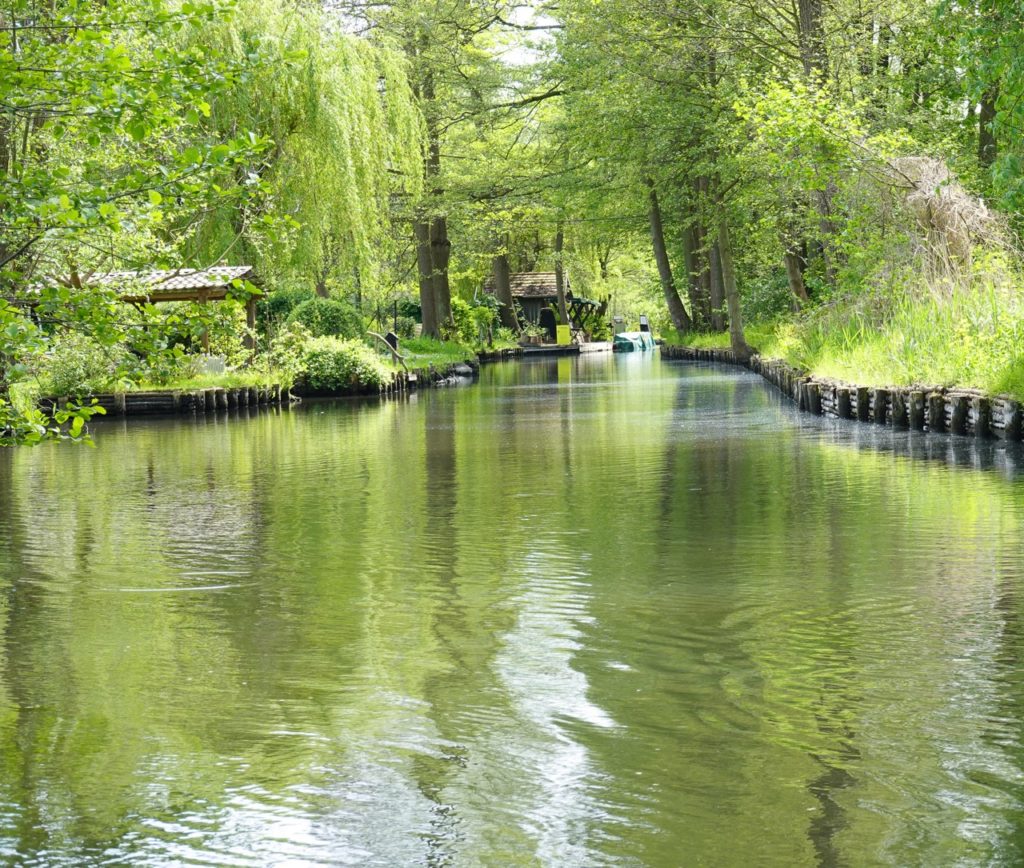
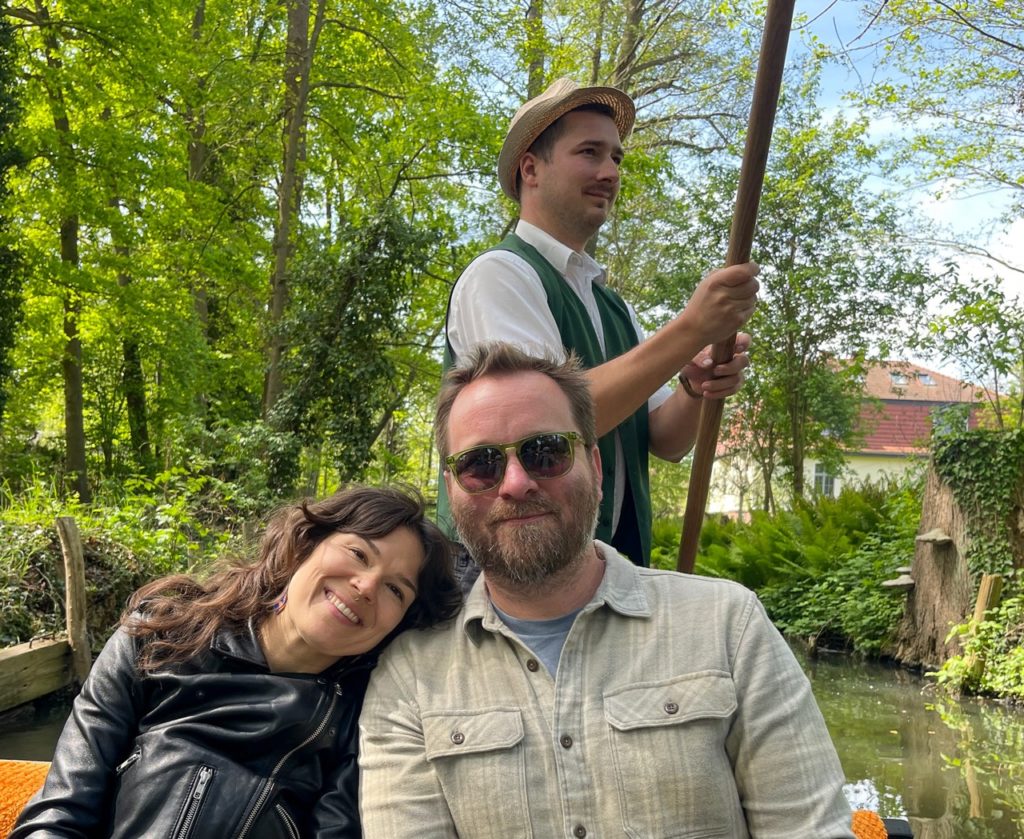
It seems that we constituted a rare contingent of tourists to Spreewald. According to our punt boat driver and guide, 90% of their visitors are vacationing Germans, not touring Americans. It turned out to be a very authentic afternoon of beauty, sun, and time together to discuss the meaning of life, schnitzel, and schnaps.
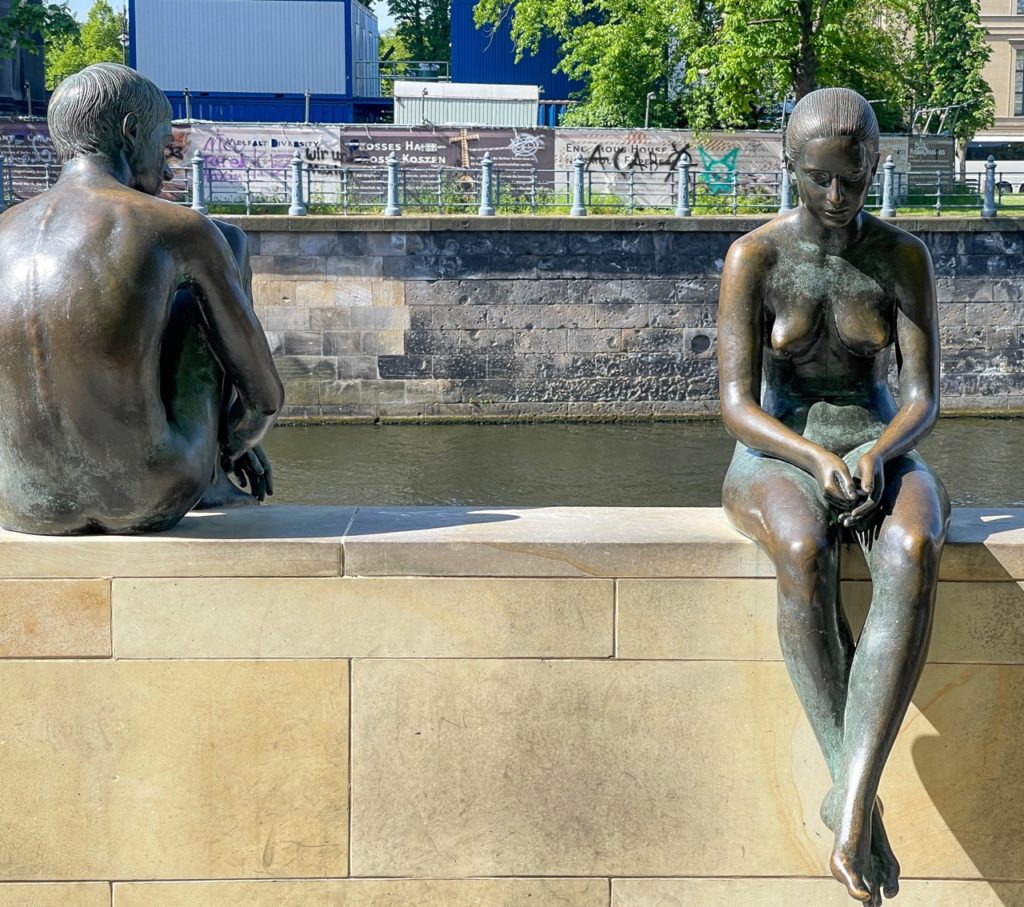
Refreshed by our excursion, we were ready the next day to tackle the GDR. So, we headed off to the DDR Museum to gain a perspective on what life in East Berlin was like from 1949 to 1990. (The official name of East Germany was the Deutsche Demokratische Republik or DDR) This museum is a very interactive and fun presentation of all elements of life in the east from the iconic East German car, the Trabant, to the all-plastic bathroom fittings in the “luxury” apartments, and a diorama of a nude beach with very detailed modeling. Apparently, the nude beach was important because as much as the Soviets attempted to repress the life of its citizens, the Germans drew a line in the sand at not being allowed to take of their clothes. (For those that didn’t catch it, that’s a Dad joke.)
Honestly, humor is a pretty consistent theme when you look back at the bumblings and fumblings of the totalitarian communist government, and that was certainly reinforced in this museum. I do not mean to make light of the repression and suffering of the population under the GDR. However, my great take away from this museum visit was that people go on with their lives, despite the absurdity of the society where they may find themselves living. Also clear to me, is that most of the angst we all suffered over the “cold war” was mostly propaganda. The east was doomed to fail and would have succumbed with or without any intervention. It was an absurd system that toppled from its own instability.
Ooops . . .
To conclude our GDR adventure, we wandered over to the great symbol of East Berlin, TV Tower. The communists built the Fernsehturm as a broadcast and communications facility, but also as a statement of power and prestige. At 1,207 feet, it is the tallest structure in Germany. It’s also the object of one of my favorite stories about the silliness of the totalitarians. You see, when the great sphere that sits about two-thirds of the way up the tower was completed, it was discovered, to the horror of the state that the sun’s reflection created a giant cross that could be seen all over Berlin. Dubbed the “Pope’s Revenge” by Berliners, officials demanded that the builders erase the reflected religious symbol. All manner of resurfacing and coatings was tried to eliminate the reflection on the stainless-steel skin, all to no avail. For our part, we happily lunched, toasted Papa’s retaliation, and enjoyed the spectacular views from the rotating restaurant that now occupies the ball.
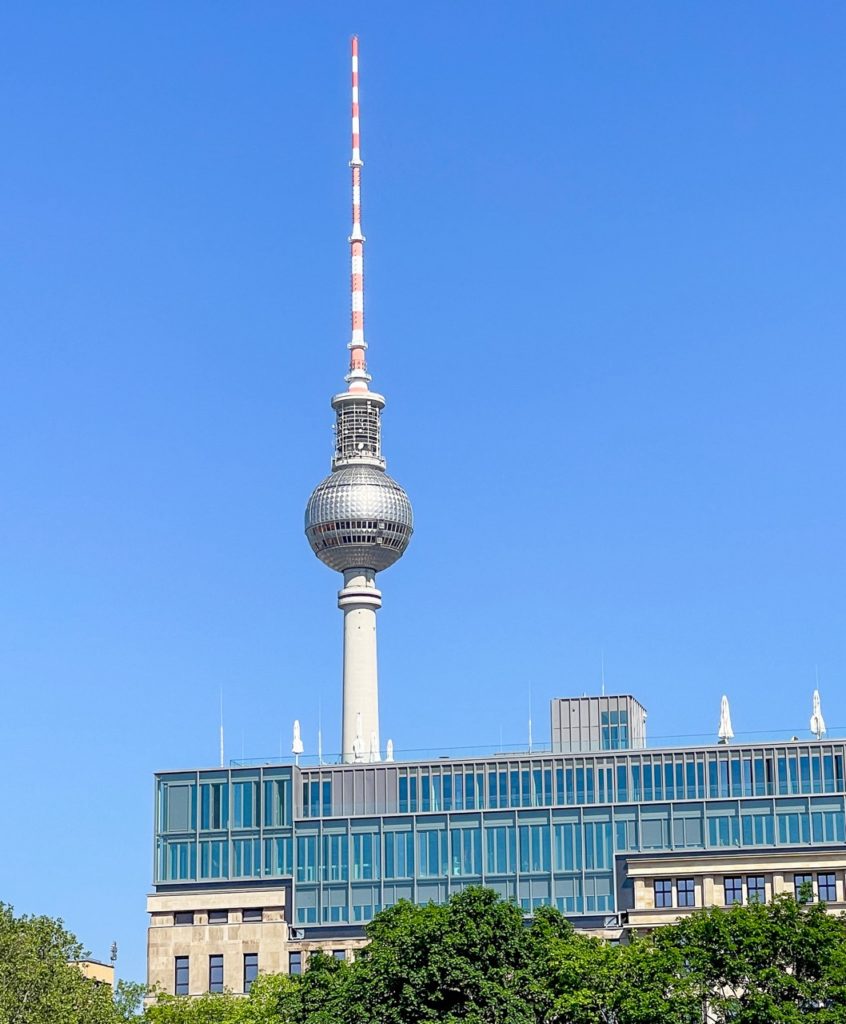
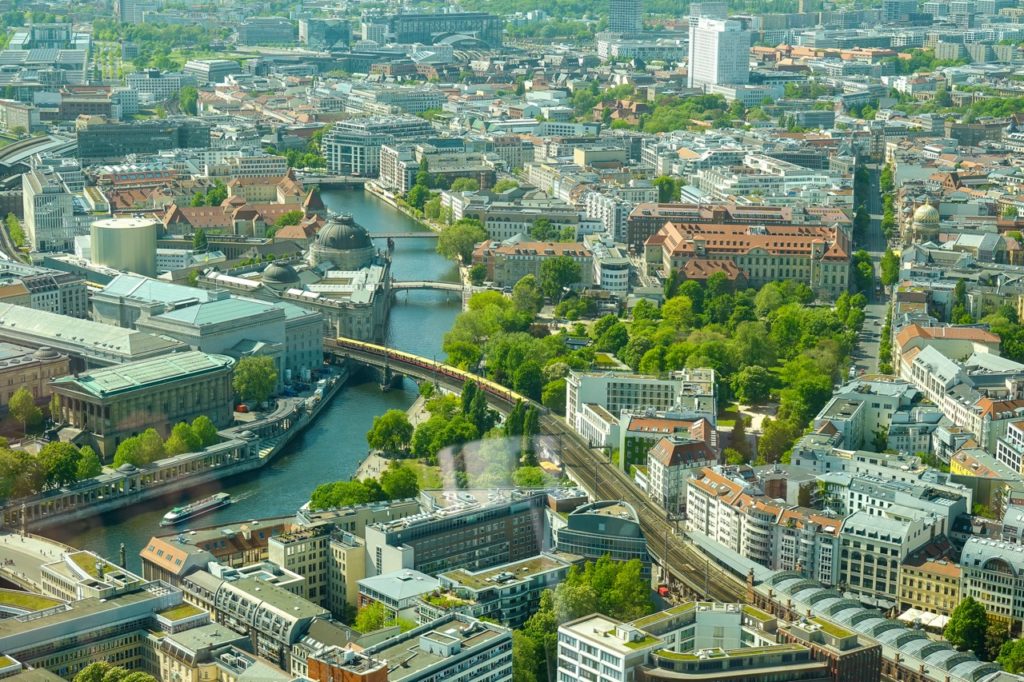
I want to be sure I correct the record. I’ve written nearly 2,000 words about Berlin’s past and it is something that must be reconned with. However, this is a city that is future oriented, not stuck in its history. It is an amazingly diverse and international culture. Only in London did we hear more languages spoken on the street. And its people are without exception friendly and welcoming. Culturally, it is as diverse as its people, featuring music, art, dance, and theater that spans the entire spectrum of creative production from ancient to futuristic. Bonnie and I try, when we’re traveling to experience live performances whenever possible, and Berlin made this an easy goal to meet.
The future depends on what you do today. . .
Mahatma Gandhi
A Crescendo of Wind
For me, there is nothing on this earth to match the sound of a live orchestra in full throated celebration of a great composition. So, among our strategies for experiencing the great capitols of Europe is to find performances in their symphony halls and opera houses where we can both enjoy live music and admire the inevitably interesting architecture. In Berlin, we struck gold.
First, we discovered that the Berliner Philharmonie was hosting a performance of “Planet Earth” – Symphony #3, by Johan de Meij, for wind orchestras. The program also included three other compositions for wind orchestra by Mr. Meij, who, it turned out, would also be conducting his own music. Michael and Charlotte have proven to be adventurous when it comes to live performances (get them to tell you about the opera I drug them to in Valencia) so, I was confident they would go along with my notion of a good time.
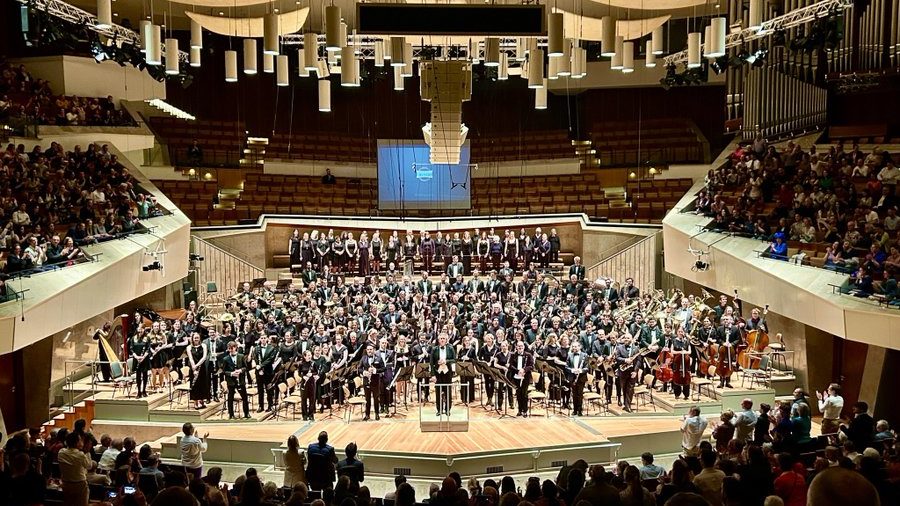
The concert hall itself is a modern design built in the early 1960’s and when we entered, I was immediately intrigued by the interior arrangement of seating levels jutting at odd angles. In the early 1980’s I had been privileged to play a role in the construction of the Orange County Performing Arts Center which shared a similar design approach based on sophisticated acoustical modeling that seeks to reduce the interior space of very large halls to smaller, resonant modules. (See me after class if you’re interested in a more detailed explanation.) Anyway, as the evening unfolded, it became clear that the acoustics for this hall are a success. The first half of the program was performed by two different, Berlin based, wind orchestras. After the intermission, the orchestras were combined to perform “Planet Earth.” I have never seen that many instruments crammed onto the platform together. Toss in a large choral ensemble, the joy of the composer himself conducting, a symphony written to take full advantage of the power brass and wind instruments produce, and you get a rare musical thrill that I will not soon forget.
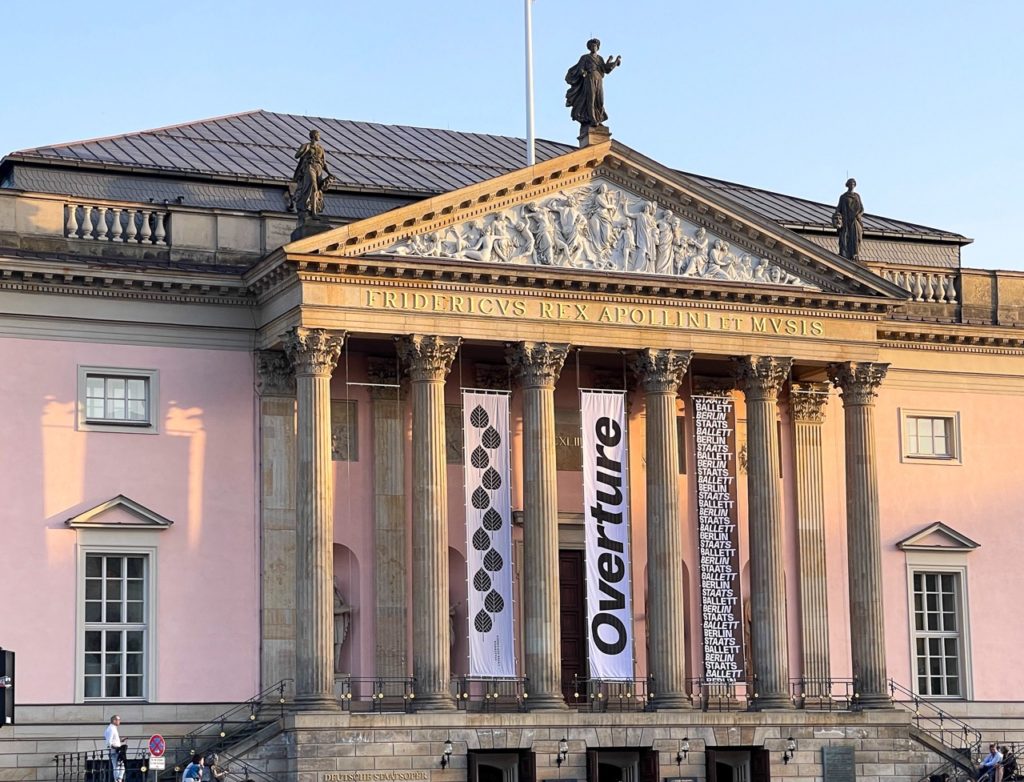
Bodies in Motion
As an encore to our evening at the symphony hall, we planned an evening at the Berlin opera house, built by Fredrich the Great in 1743 (and rebuilt, as you might imagine, in 1955). I was convinced that our karma for this trip was good when I found a dance program called “Overture” composed by a young choreographer from Valencia, Spain. Modern dance is one of Bonnie’s passions, and this performance at the Staatsoper Unter den Linden (State Opera under the Lime Trees) would be a world premiere from an extraordinary artist, Marco Marau, who is fast becoming a superstar in the world of dance. Set to Mahler’s 5th Symphony, the production took modern dance to a level of beauty, narrative, and emotional impact beyond anything we have previously experienced. Combining music, stagecraft, costuming, and human movement, Marau weaves a magical tapestry that has as its theme the cyclical construction and destruction of societies.
I am preoccupied with the question of how long a culture and society can survive without change. What happens when the new generation no longer initiates change? We build temples, then we destroy them, build and destroy civilizations and even ourselves… and then we begin to erect new columns again. . . When you understand the past and are curious about what others before us have done, you understand the present. I want to mix the past and the present and leap into the future.
Marco Marau
Gratitude
We could not be more grateful for the chance this trip provided us to spend time with Michael and Charlotte. Now that our boys are all grown up and we live thousands of miles and a few time zones from each other, it it’s not easy to carve out time to spend together. Of course, we send texts, emails, and arrange an occasional Facetime call, but there’s nothing like being in the same place for a while. Spending 6 full days with Michael and Charlotte in Berlin was the most important element of this trip for us. It was wonderful to slow down and hear about their lives and it was delightful to see the world through their eyes. Their joy and sense of adventure was truly contagious. We are fortunate to have such wonderful sons. Exploring the world with them is magical.
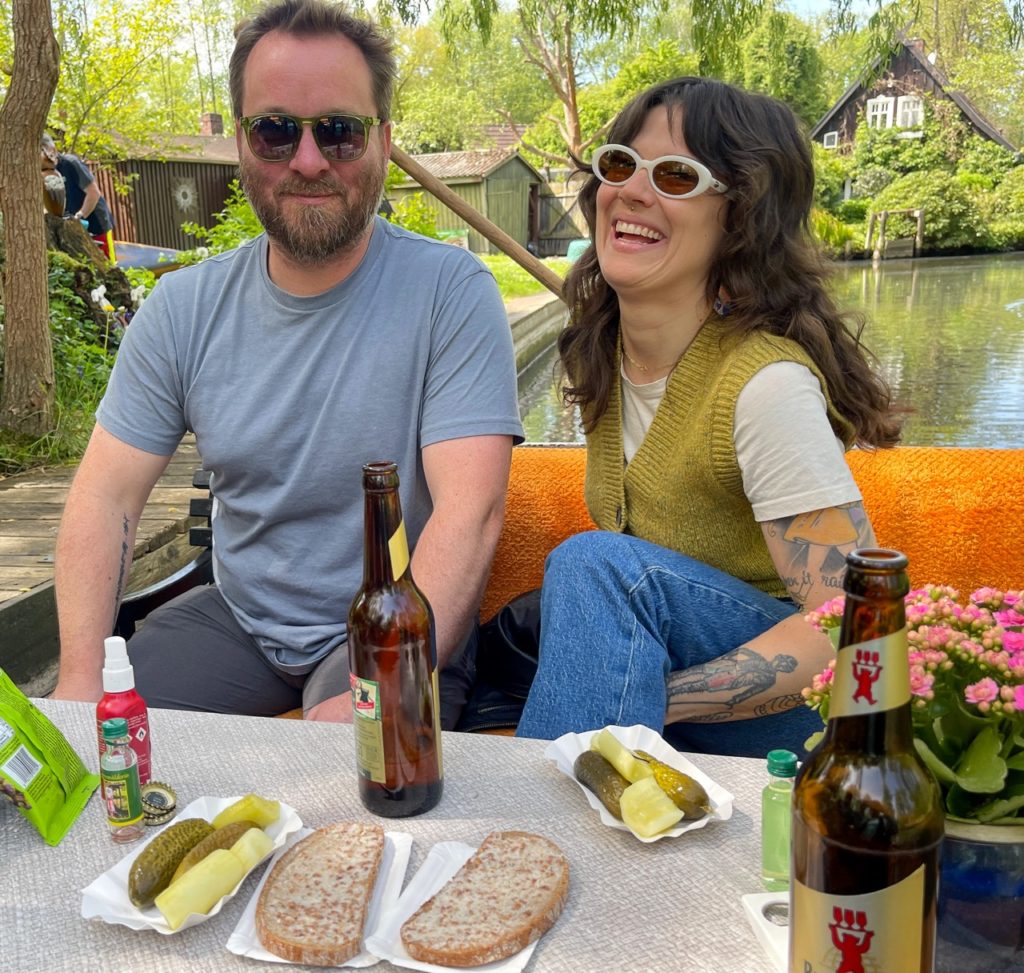
About Us
Welcome to our little corner of the world where we invite you to embark on exciting journeys with us!
We’re Ed and Bonnie, a duo passionate about exploring the world and experiencing its wonders. Our love for travel isn’t just about discovering new places; it’s about sharing those moments with cherished family and friends like you.
Our hope is that you will feel like you’re right there with us, sharing in the excitement and wonder of each destination. Better yet, let’s plan a rendezvous somewhere wonderful! Learn more


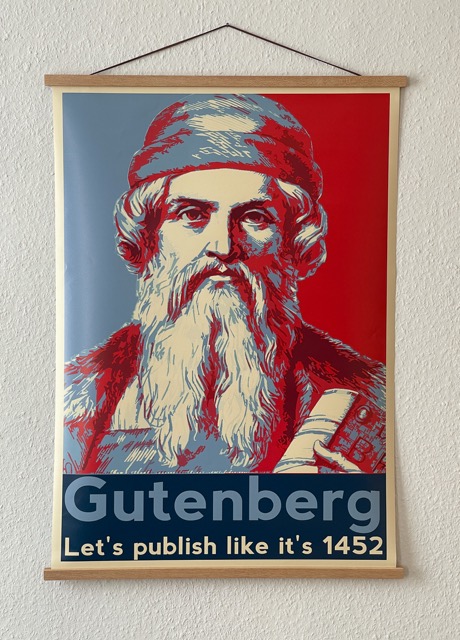
You’ve treated us to a place neither of us has been and it is indeed an Eye Opener! Your words and photos, together with quotes, combine to paint a complex and rich culture! It is unlikely that we will venture to Berlin, so to have you as a historic and cultural guide is a true Gift, Ed. Friends that travel to Berlin rave about the art, architecture, and contemporary culture. SO glad you were able to share this Memorable Experience with Mike and Charlotte. We can tell that it made all the difference! J&N xo
Great commentary here on so many topics! Very moving. Thanks for sharing.
It was such a special trip for us as well! Definitely the highlight of ours! Can’t wait for our next adventure together!